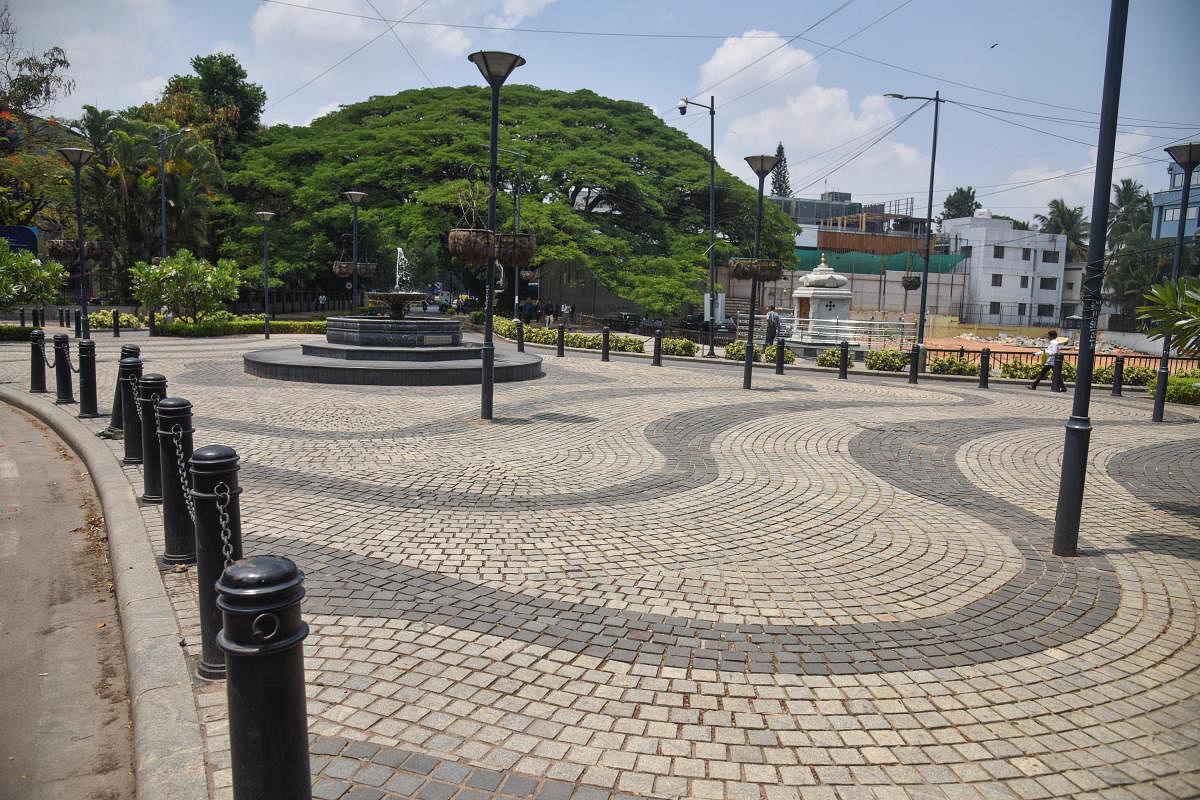
Bengaluru roads are an enigma that perhaps even Alan Turing would not have been able to decipher. Being riddled with potholes and often without footpaths, these roads see the dangerous criss-cross of pedestrians and motorists trying to get to their destinations. This is, of course, made even more dangerous in the monsoon due to inadequate stormwater drainage.
On rare occasions when the roads are in a usable condition for both pedestrians and motorists, they are dug up soon for ‘maintenance work’ of some sort and the conditions are reset to the default ‘terrible’ setting.
To address these issues, the BBMP came up with the Tender SURE (Specifications for Urban Roads Execution) to upgrade roads in the central business district (CBD). According to the Jana Urban Space Foundation, TenderSURE roads are about “addressing the issues that have made Indian roads notorious for chaotic traffic, potholes, broken footpaths, overflowing drainage and poorly placed transformers and electrical wiring.”
In order to ascertain how the roads are being received by the general public, we quiz some Bengalureans.
Yamini Suresh, a project intern at an urban planning institute is optimistic about the effects that TenderSURE will have on Bengaluru roads. She elaborates, “The idea of TenderSURE is a starting point to declutter our roads. In India, cities are designed according to the convenience of vehicles and not the people.”
“With these urban road design regulations, many CBD areas in the city will become NMT (non motorised transport) friendly and walkable” she says. Espousing the importance of micro mobility will help in minimising the strain on cab-aggregators and public transport, thereby helping in clearing up more traffic.
Naveed Ahmed, a private bank executive, has this to say about the road upgrade: “This seems to be a really good move but should have been thought of much earlier. It’s about time we understood the simple fact that the solution to Bengaluru’s traffic problem lies in encouraging public transport and not building flyovers and widening roads.”
“Think about it this way. A bus carrying 60 people occupies way less space than the same number of people in cars or even two-wheelers. You can keep increasing the size of roads and add flyovers but as the number of vehicles increase, those spaces will be eaten up really quickly,” he explains.
TenderSURE roads have dedicated conduits under the footpath for various utilities such as electricity, water, sewage etc. This is to help reduce the need to excavate the road on a regular basis, a common gripe with citizens.
Nikhil Madhavan, who works at an education-tech company notes, “Isn’t it counterintuitive to dig up a road immediately after it’s been built? Every other day, I see a newly paved road dug up almost immediately for some reason or the other.” Couldn’t they have thought about that before the road was paved? “It is almost as if there is some conspiracy to ensure the roads are never useable,” says Madhavan.
Vaishnavi N, an engineering student, is however, not convinced that Tender SURE roads alone will help. “These roads still can’t guarantee the safety of pedestrians. A lot of people on two-wheelers will still be riding on the footpath to bypass the traffic. The only time they follow the rules is when there is a policeman around and they know about it,” she elaborates.
Tender SURE roads, while being an important step in the right direction, are unlikely to be effective in solving the city’s mobility problem unless followed up with a wide range of sweeping reforms. Reforms that will encourage people to use public transport to travel to commercial centres, and then turn pedestrians when they reach there.